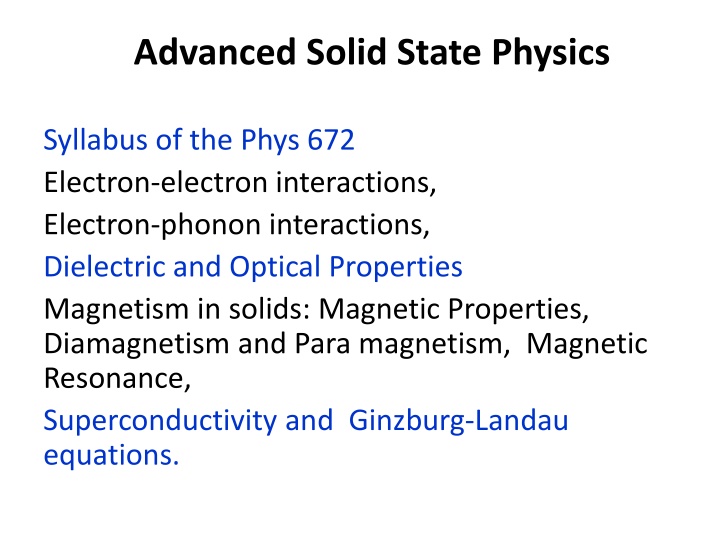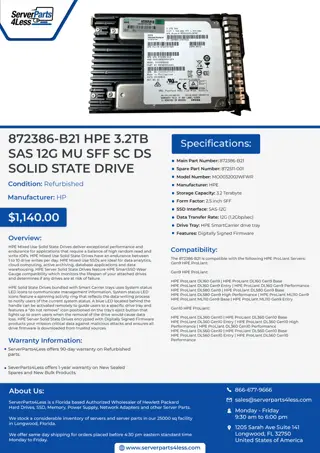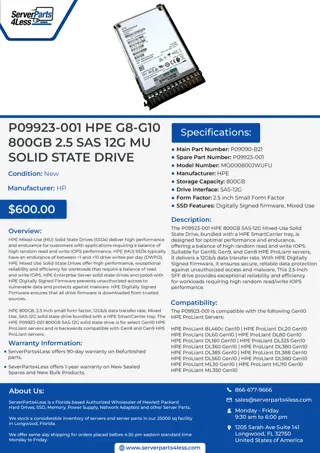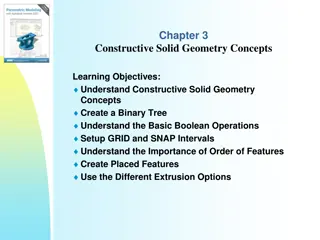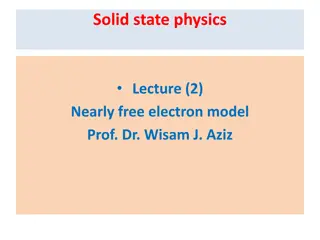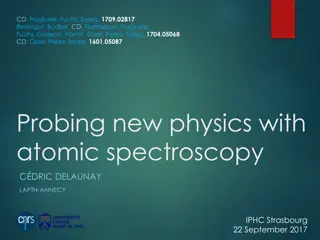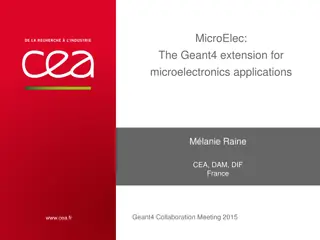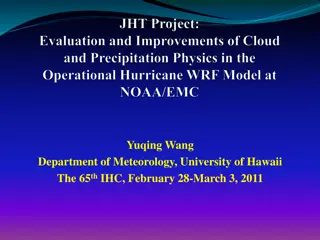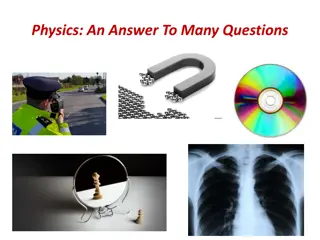Introduction to Drude Model in Solid State Physics
Drude Model, formulated around 1900, explains the fundamental properties of metals such as electricity and heat. It proposes that electrons in metals behave like a classical electron gas, moving freely between atomic cores. The model considers the mean free path between electron collisions and estimates the number of electrons per unit volume. Maxwell applied Boltzmann statistics to electrons in the model, explaining electron behavior under external forces and the establishment of drift velocity due to collisions with atomic cores.
Download Presentation

Please find below an Image/Link to download the presentation.
The content on the website is provided AS IS for your information and personal use only. It may not be sold, licensed, or shared on other websites without obtaining consent from the author.If you encounter any issues during the download, it is possible that the publisher has removed the file from their server.
You are allowed to download the files provided on this website for personal or commercial use, subject to the condition that they are used lawfully. All files are the property of their respective owners.
The content on the website is provided AS IS for your information and personal use only. It may not be sold, licensed, or shared on other websites without obtaining consent from the author.
E N D
Presentation Transcript
Advanced Solid State Physics Syllabus of the Phys 672 Electron-electron interactions, Electron-phonon interactions, Dielectric and Optical Properties Magnetism in solids: Magnetic Properties, Diamagnetism and Para magnetism, Magnetic Resonance, Superconductivity and Ginzburg-Landau equations.
Books 1. Introduction to solid state physics: by Charles Kittle 2. by
Review of Free Electron Model 1. Classical Theory Drude Model 2. Quantum theory
Drude model History Hundred years ago (around 1900) there was no understanding of physics of solids. There was no explanation of Photo electric effect. Rutherford has not determined the size of the nucleus. Bohr had not given the shell (discrete energy level ) picture of atom. Formulation of quantum decade behind. Thomson had discovered the electrons in 1897 mechanics was
Drude model continue Drude in 1900 formulate a model to explain the two of the most striking properties of the metallic state: namely electricity and heat. Physical model: In metallic state most loosely bound electrons some how become mobiles. These electrons behaves like classical particles generally we call it electron gas. Energy of the electron is determined by the temperature of metal. The electrons don t interact with each other rather with the much larger atomic cores. conduction of
Drude model continue Geometrical consideration imply mean free path between collision of 1/( R2n) Where R is core radius and n # of atoms per unit volume Estimate the number of electrons per unit volume.
continue n =( NAZc m)/A = (6:02 x 1023atoms/mol x1e/atomx1x106g/m3)/ 29g/mol = 2 x 1028 e/m3 where NAis Avogadro's number, mis the density of the metal, A is the atomic number of the element and the numbers are for Na (sodium). He assumed that after collision a conduction electron has random direction and speed and does not depend on velocity before.
continue By analogy with ideal gas, Maxwell applied Boltzman electrons. Thermal velocity of electron is order of 105 m/s. But average velocity is zero. If the electron is subjected to external force, then the electrons accelerate. However in Drude model the collision of electrons with atomic cores prevents to accelerate indefinitely rather results in establishment of drift velocity in the direction of the force. distribution was for
A statistical equation for describing the "mean drift velocity" in the direction of the field may be written: where is the "mean free time" or "relaxation time" (the "mean free path" is given by t times the "mean thermal velocity", vtherm. When the field is zero, this equation, obviously, describes the decay of any gross charge carrier motion in any particular direction.
This equation has the simple solution: where is the mobility. Finally, if we have n charge carriers per unit volume, the net flux of charge carriers per unit time is given by
continue and the current density by Where is electrical conductivity. If we have both negative and positive charge carriers then
continue For metals the number carriers is fixed and the essentially linear temperature dependence of metallic conductivity is attributed to the temperature dependence of the mobility. Electrical conductivity of sodium metal There are a couple of implications of this. For a metal like Na with a resistivity, Na= 1/ = 50 n -m the relaxation time is about 10-14s.
QUANTUM MECHANICAL TREATMENT OF ELECTRON GAS We find the ground state properties of N electrons confined in Volume V. Ground state of N independent electrons can be found by finding the energy levels of single electron in the volume V and filling the N electrons according to Pauli exclusion principle. A single electron will satisfy the time independent Schr dinger equation
continue Confinement of electrons is represented by boundary condition of The choose of boundary condition Whenever one is dealing with problems that are not explicitly concerned with the effects of metallic surface, then choice of boundary condition is on one s disposal and can be determined with mathematical convenience. If metal is sufficiently large , we expect that bulk properties will be unaffected by the detailed configuration of surface. Our choice will be cube of length L=V1/3
Boundary condition The boundary condition Every where outside the box In particular at boundaries.
Boundary condition Taking wave function 0 at boundary gives standing wave solution inside unsatisfactory. Transport of charge and energy of electrons are more conveniently discussed in terms of running wave. This can be achieved by assuming the periodic boundary condition. the box. Which is
continue The analytical form (x,y,z+L)= (x,y,z) (x,y+L,z)= (x,y,z) (x+L,y,z)= (x,y,z) This boundary condition is known as Born-von Karman boundary condition. The solution of Schrodinger eqn is (r)= Aeik.r= (1/V) eik.r where E = 2k2/2m
continue Energy ? = [ ?]2/2m
continue In terms of energy Solve it at home
Fermi energy How to calculate
Ground state of N non interacting electrons gas We define the density of states g(k)
The number of states in a given energy range (E,dE) is equal to the volume enclosed between the spherical shells E +dE = constant and E = constant, multiplied by the density of states in k- space. From this we obtain the density of states on the energy scale
We now consider an electron gas with N electrons. The state of lowest energy (ground state) will then correspond to the N/2 points in k-space having the lowest energy, each being occupied by two electrons (Fig. 2.1). In k-space these points fill a sphere of radius (Fermi sphere). is defined by the condition
Here n= N/Vgis the electron concentration. We then have the following expression for the Fermi radius KF and for the energy of electrons at the surface
Excited states The excited states of the system consist of states where one or more fermions is excited to higher energy states. The average occupations of the states at a given temperature T is given by the Fermi-Dirac distribution
Average Energy and Specific heat Calculate ground state energy
